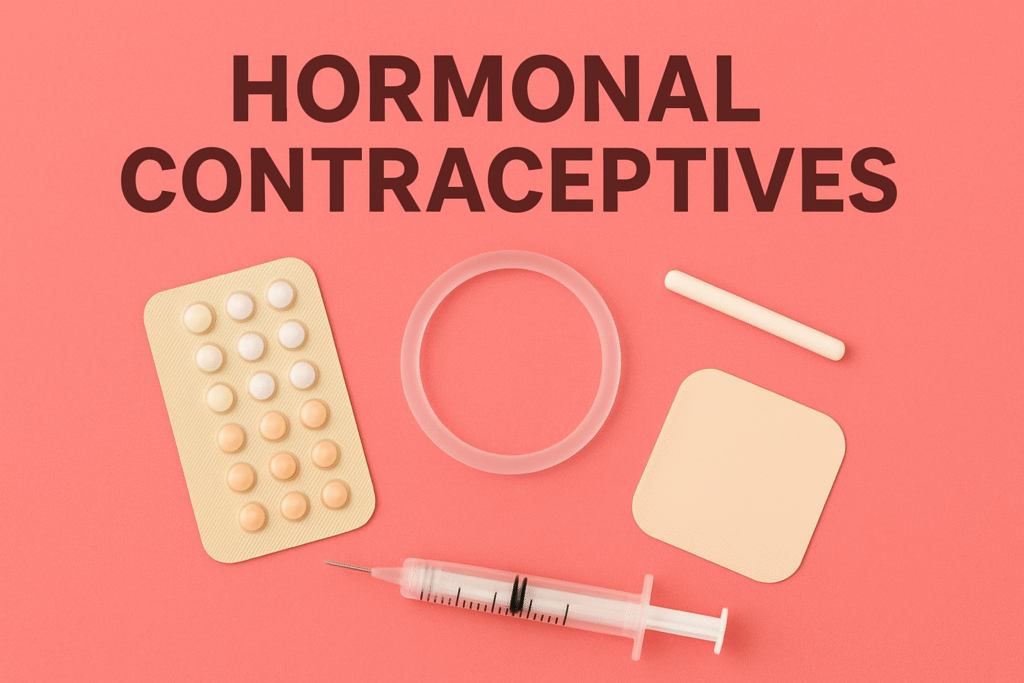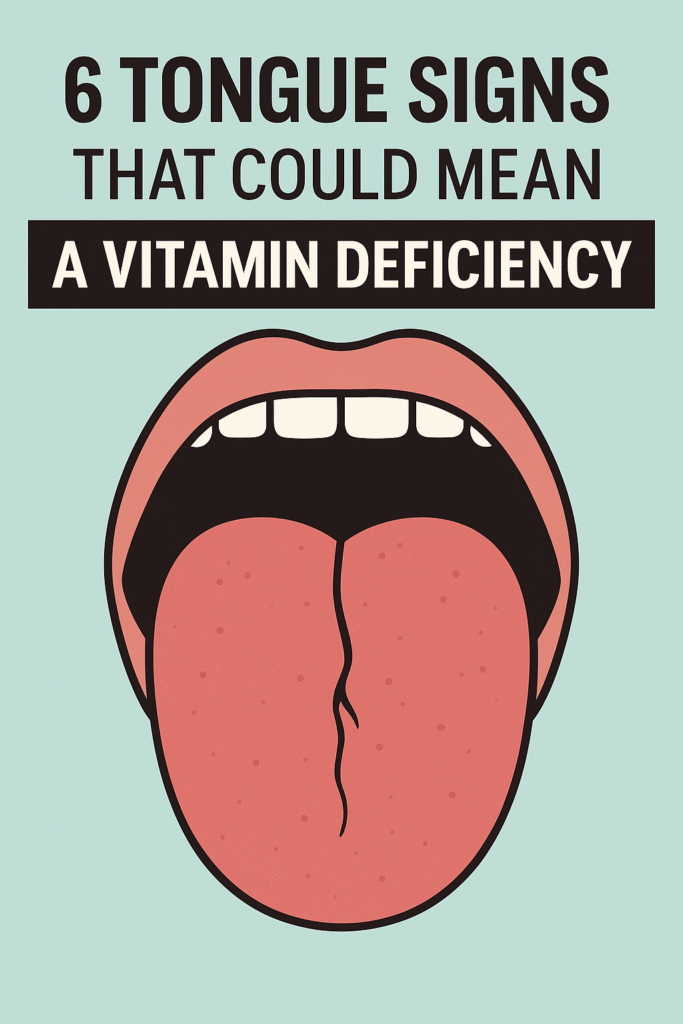
⚠️ Affiliate Disclaimer: This post may contain affiliate links, which means I may earn a small commission — at no extra cost to you — if you make a purchase through one of these links. I only recommend products or services I genuinely trust and believe can provide value. Thank you for supporting My Medical Muse!
Hormonal Contraceptives: Complete Guide to Types, Benefits, Risks, and Effectiveness
Contraception has completely reshaped the landscape of reproductive health. It has given women and couples the freedom to decide if, when, and how many children to have, while also offering the ability to manage menstrual cycles and certain health conditions. Among the different options available today, hormonal contraceptives stand out as some of the most popular and effective.
Since the launch of the first birth control pill in the 1960s, hormonal contraception has gone far beyond the pill itself. Today, women have access to a wide range of choices, including injections, implants, patches, vaginal rings, and hormonal IUDs. These methods have not only advanced medical science but also empowered millions of women worldwide to take control of their fertility, careers, education, and personal lives.
But despite their widespread use, many people still have questions:
- How do hormonal contraceptives actually work in the body?
- What are the different types available, and how do they compare in effectiveness?
- Are there side effects or health benefits beyond preventing pregnancy?
- Which method is best for different lifestyles and health needs?
This comprehensive guide explores everything you need to know about hormonal contraceptives. We’ll break down how they work, the different types available, their effectiveness, benefits, possible side effects, and practical considerations. Whether you are new to birth control, considering switching methods, or simply want to deepen your knowledge, this article will help you make an informed and confident choice about your reproductive health.
What Are Hormonal Contraceptives?
Hormonal contraceptives are birth control methods that rely on synthetic versions of the body’s natural reproductive hormones, primarily estrogen, progestin, or a combination of both. These hormones are carefully formulated to interfere with the natural menstrual and ovulation cycles, making it much more difficult for pregnancy to occur.
Hormonal contraceptives prevent pregnancy through three main mechanisms:
- Suppressing ovulation: Normally, the ovaries release an egg each month during ovulation. Hormonal contraceptives stop this release, meaning there’s no egg available for sperm to fertilize.
- Thickening cervical mucus: The cervix naturally produces mucus that changes throughout the cycle. When influenced by hormones, this mucus becomes thicker and stickier, forming a barrier that makes it harder for sperm to swim through and reach the egg.
- Thinning the uterine lining (endometrium): A fertilized egg typically implants into the uterine lining. Hormonal contraceptives keep the lining thinner, reducing the likelihood that implantation will occur.
Unlike barrier methods such as condoms, diaphragms, or cervical caps, which physically block sperm from reaching the egg. Hormonal contraceptives work internally by altering the hormonal environment of the body. This makes them highly reliable when used correctly and consistently.
Types of Hormonal Contraceptives
1. The Birth Control Pill (Oral Contraceptives)
The pill remains one of the most widely recognized and commonly used forms of hormonal contraception. It comes in different formulations, but both types involve taking a small tablet by mouth daily.
Types of pills:
- Combined Oral Contraceptives (COCs): Contain both estrogen and progestin. These are the most common pills and work primarily by suppressing ovulation, along with other mechanisms.
- Progestin-Only Pills (POPs or “mini-pill”): Contain only progestin, making them suitable for women who cannot take estrogen (such as those who are breastfeeding, have migraines with aura, or are at higher risk for blood clots).
How the pill works:
- Suppresses ovulation (most effective with COCs, less consistent with POPs).
- Thickens cervical mucus to hinder sperm movement.
- Thins the endometrial lining, lowering chances of implantation.
Advantages of the pill:
- Highly effective when taken as prescribed (up to 99% effective with perfect use, around 91% with typical use).
- Regulates menstrual cycles, making periods more predictable.
- Reduces menstrual cramps and PMS symptoms, improving quality of life for many women.
- Improves acne and skin clarity, especially COCs containing certain progestins.
- May reduce the risk of certain conditions, including ovarian cysts, endometriosis symptoms, and some cancers (like endometrial and ovarian cancer).
Disadvantages of the pill:
- Requires daily commitment. Missing pills can lower effectiveness.
- Possible side effects, including nausea, breast tenderness, mood changes, and spotting between periods.
- Reduced effectiveness when taken with certain medications (like some antibiotics or seizure drugs).
- Not suitable for everyone. Women who smoke and are over 35, or those with a history of blood clots, may be advised against estrogen-containing pills.
In summary, the birth control pill is a convenient and effective option, particularly for women who prefer a reversible method they can stop at any time. However, it demands consistency and responsibility to maintain its effectiveness.
2. Contraceptive Injections
Examples: Depo-Provera (DMPA)
Contraceptive injections are a reliable, low-maintenance option for women who don’t want the daily responsibility of remembering a pill.
How they work:
- A shot of progestin is given in the upper arm or buttock once every 12 weeks (3 months).
- The hormone suppresses ovulation, thickens cervical mucus, and thins the uterine lining, creating multiple layers of pregnancy prevention.
Advantages:
- Convenient: only four visits per year are required.
- Private and discreet: no visible device, patch, or pill pack.
- May reduce menstrual pain and, for some women, periods eventually stop altogether, which can be a welcome benefit.
- Suitable for women who can’t take estrogen, such as those with certain health risks.
Disadvantages:
- Irregular bleeding or spotting is common in the first 6-12 months.
- Delayed return to fertility: after stopping injections, it may take 9-12 months for fertility to return to normal.
- Potential weight gain in some women.
- Possible reduction in bone mineral density with long-term use, especially in younger women, though this usually reverses after stopping.
The contraceptive injection is best suited for women who want a convenient, reversible, estrogen-free option and don’t mind quarterly clinic visits.
3. Contraceptive Implants
Examples: Nexplanon, Implanon
Implants are one of the most effective and long-lasting hormonal contraceptives available today.
How they work:
- A small, flexible rod, about the size of a matchstick is inserted under the skin of the upper arm by a healthcare professional.
- It steadily releases progestin into the bloodstream, preventing pregnancy for 3-5 years depending on the brand.
Advantages:
- Over 99% effective, making it one of the most reliable birth control options.
- Long-lasting but reversible: once inserted, it works for years, but fertility returns quickly after removal.
- Low maintenance: no daily pill, no regular clinic visits.
- Safe for women who can’t take estrogen.
Disadvantages:
- Irregular bleeding or spotting, especially in the first year. Some women may have lighter periods, while others may stop menstruating altogether.
- Requires a minor in-office procedure for both insertion and removal.
- Potential for mild side effects like headaches, breast tenderness, or mood changes, though many women tolerate it well.
Implants are a great choice for women seeking a long-term, “set it and forget it” method with quick reversibility.
4. Hormonal Intrauterine Device (IUD)
Examples: Mirena, Skyla, Kyleena, Liletta
Hormonal IUDs are tiny, T-shaped devices that sit inside the uterus and provide years of worry-free contraception.
How they work:
- The IUD is inserted into the uterus by a healthcare provider.
- It releases a small, localized amount of progestin directly into the uterus.
- The hormone thickens cervical mucus, thins the uterine lining, and partially suppresses ovulation in some women.
Advantages:
- Extremely effective over 99% protection against pregnancy.
- Long-lasting depending on the brand, works for 3 to 8 years.
- Very low hormone dose, since it acts mainly in the uterus rather than throughout the bloodstream.
- Can improve heavy or painful periods: some women stop menstruating altogether after a year of use.
- Rapid return to fertility once removed.
Disadvantages:
- Requires a clinical procedure for insertion, which may cause temporary cramping or discomfort.
- Irregular bleeding or spotting is common in the first 3-6 months.
- Small risks include expulsion (the device slipping out) or uterine perforation (rare but possible during insertion).
Hormonal IUDs are an excellent option for women who want long-term, low-hormone contraception with the added benefit of lighter or no periods.
5. Contraceptive Patch
Examples: Xulane, Evra
The contraceptive patch is a skin-applied method that delivers hormones steadily, similar to the pill, but without the daily reminder.
How they work:
- The patch sticks to the skin (buttock, abdomen, upper arm, or back).
- It releases estrogen and progestin into the bloodstream.
- Worn for one week at a time, changed weekly for three consecutive weeks, followed by a patch-free week during which menstruation occurs.
Advantages:
- No daily pill to remember, just a weekly change.
- Consistent hormone levels, avoiding some peaks and troughs of pills.
- Predictable cycles, with regular withdrawal bleeding.
Disadvantages:
- Can cause skin irritation or rash where the patch is applied.
- May be less effective in women who weigh over 90 kg (200 lbs).
- Requires remembering a weekly schedule for changing patches.
- Carries the same risks as other estrogen-containing methods, such as a small increased risk of blood clots.
The patch is ideal for women who like the simplicity of fewer reminders but don’t want something as long-term as an implant or IUD.
6. Vaginal Ring
Examples: NuvaRing, Annovera
The vaginal ring is a flexible, soft device that is placed inside the vagina, where it continuously releases hormones.
How they work:
- Inserted by the user into the vagina, where it stays for three weeks.
- Releases estrogen and progestin locally, absorbed through the vaginal wall.
- After three weeks, the ring is removed, and the user has a one-week break during which a period typically occurs.
Advantages:
- Easy to use: insertion and removal are simple and done at home.
- Lower hormone dose: than pills or patches, since absorption is local.
- Predictable cycles: with regular monthly bleeding.
- Some rings (like Annovera) are reusable for up to a year, making them cost-effective.
Disadvantages:
- May cause vaginal irritation, discharge, or discomfort in some users.
- Can occasionally slip out, though it can be rinsed and reinserted.
- Carries similar risks as other estrogen-containing methods.
The vaginal ring is a good choice for women who want a low-maintenance method but prefer something self-managed rather than a doctor-inserted device.
Effectiveness of Hormonal Contraceptives
When choosing a birth control method, one of the first questions most people ask is: “How effective is it?” The answer depends not only on the method itself but also on how consistently and correctly it is used. Typical use refers to how the method works in real life, including missed doses, delays, or mistakes. Perfect use reflects the effectiveness if instructions are followed 100% correctly, without errors.
Here’s how hormonal contraceptives compare:
Method | Typical Use Effectiveness | Perfect Use Effectiveness |
Pill (COC/POP) | 91% | 99% |
Patch | 91% | 99% |
Vaginal Ring | 91% | 99% |
Injection | 94% | 99% |
Implant | >99% | >99% |
Hormonal IUD | >99% | >99% |
Methods like the implant and hormonal IUD are the most reliable because they require little to no user action once in place. Shorter-term methods (pills, patch, ring) are highly effective but more prone to user error.
Benefits Beyond Birth Control
Hormonal contraceptives do much more than prevent pregnancy. In fact, many women start or continue using them for their non-contraceptive health benefits.
- Menstrual regulation: Pills, patches, rings, and IUDs can make cycles more predictable and lighter.
- Reduced cramps and PMS: Hormonal balance helps ease painful periods and premenstrual symptoms.
- Lower risk of gynecologic cancers: Long-term use of certain contraceptives lowers the risk of ovarian and endometrial cancer.
- Improved skin: Combined methods (pill, patch, ring) can reduce acne by controlling androgens.
- Treatment of gynecologic conditions: Hormonal methods are often prescribed for endometriosis, PCOS, and uterine fibroids, as they reduce abnormal bleeding and pain.
- Prevention of anemia: By reducing menstrual flow, hormonal contraceptives lower the risk of iron-deficiency anemia.
For many women, these additional benefits can significantly improve quality of life, making hormonal contraception a tool for both reproductive planning and overall health management.
Risks and Side Effects
While hormonal contraceptives are generally safe for most women, no medication is completely free from side effects. Most side effects are mild and temporary, while serious complications are rare.
Common side effects may include:
- Nausea or mild stomach upset
- Breast tenderness or enlargement
- Headaches or migraines
- Mood swings or emotional changes
- Irregular spotting or breakthrough bleeding
- Weight fluctuations (though usually small and temporary)
Rare but serious risks include:
- Blood clots (especially in women who smoke or have clotting disorders)
- Stroke or heart attack, particularly in smokers over age 35 using estrogen-based methods.
- High blood pressure (hypertension) in some users.
A healthcare provider should always review your personal and family medical history to help choose the safest method. Women with certain conditions (like migraines with aura, clotting disorders, or uncontrolled hypertension) may be advised to avoid estrogen-containing contraceptives.
Myths and Misconceptions
Despite decades of research, hormonal contraceptives are still surrounded by myths. Let’s clear up some of the most common misunderstandings:
- “Hormonal contraceptives cause infertility.”
- Reality: Fertility usually returns quickly after stopping most methods. The injection (Depo-Provera) may delay fertility for up to a year, but it does not cause permanent infertility.
2. “They make you gain a lot of weight.”
- Reality: Most women do not experience significant long-term weight gain. Some may notice small changes due to fluid retention, appetite changes, or lifestyle factors.
3. “Only young women should use them.”
- Reality: Many hormonal contraceptives are safe for women well into their 40s, as long as no medical contraindications exist. Providers often help women transition to non-hormonal or permanent options as menopause approaches.
4. “The pill protects against STIs.”
- Reality: Hormonal methods prevent pregnancy but offer zero protection against sexually transmitted infections (STIs). Condoms remain the only contraceptive method that also reduces STI risk.
How to Choose the Right Hormonal Contraceptive
With so many options available, choosing the right hormonal contraceptive can feel overwhelming. The truth is, there’s no “one-size-fits-all” solution. The best method depends on your body, lifestyle, health goals, and personal preferences.
Here are the key factors to consider:
- Lifestyle & Convenience
- If you’re disciplined and don’t mind taking a daily pill, oral contraceptives may be a good fit.
- If you’d rather “set it and forget it,” long-term methods like the implant or IUD may suit you better.
- If you want flexibility without committing for years, options like the patch, ring, or injection offer a middle ground.
- If you’re disciplined and don’t mind taking a daily pill, oral contraceptives may be a good fit.
- Health History
- Women who smoke and are over 35 are generally advised to avoid estrogen-containing methods (pill, patch, ring).
- Those with migraines, clotting disorders, or high blood pressure may also need to avoid estrogen and instead use progestin-only methods (mini-pill, implant, IUD, or injection).
- A doctor’s review of your medical history is essential for safe use.
- Women who smoke and are over 35 are generally advised to avoid estrogen-containing methods (pill, patch, ring).
- Future Pregnancy Plans:
- If you want children in the near future, short-term options like the pill, patch, or ring make it easy to stop and quickly return to fertility.
- If you’re not planning pregnancy for several years, a long-term option like an implant or hormonal IUD can provide worry-free protection.
- If you want children in the near future, short-term options like the pill, patch, or ring make it easy to stop and quickly return to fertility.
- Budget & Access
- Some methods require upfront costs (e.g., implant or IUD) but save money over time.
- Pills, patches, and rings often have ongoing monthly costs but are easily accessed at pharmacies.
- Consider whether you’re comfortable with clinic visits for procedures (insertion/removal) or prefer self-managed methods.
- Some methods require upfront costs (e.g., implant or IUD) but save money over time.
- Side Effect Tolerance:
- Some women prefer low-hormone or localized methods (like hormonal IUDs) to minimize systemic side effects.
- If acne control or period regulation is a priority, combined methods (pill, patch, ring) may be beneficial.
- If lighter or absent periods are a goal, the injection or hormonal IUD may be appealing.
- Some women prefer low-hormone or localized methods (like hormonal IUDs) to minimize systemic side effects.
It often takes a few months (and sometimes trial and error) to see how your body responds. Open communication with your healthcare provider helps fine tune the best choice for you.
FAQs About Hormonal Contraceptives
Can I use hormonal contraceptives while breastfeeding?
Yes, but in the early months after childbirth, progestin-only methods (mini-pill, implant, IUD, or injection) are preferred. Estrogen can sometimes reduce milk supply, so it’s usually avoided until breastfeeding is well established.
Can I skip periods with the pill?
Yes. Extended-cycle pills or continuous use of standard pills allow you to safely reduce or eliminate monthly bleeding. Many women choose this option to manage painful or inconvenient periods.
What if I miss a pill?
If you miss one pill, take it as soon as you remember and continue as normal. If more than 24-48 hours are missed, follow the instructions on your pill pack and use backup contraception (like condoms) for the next 7 days to stay protected.
Are hormonal contraceptives safe for teenagers?
Yes. Hormonal contraceptives are considered safe and effective for adolescents. In addition to pregnancy prevention, they can help regulate cycles, reduce painful periods, and improve acne, common concerns for teenagers.
Do they protect against cancer?
Yes, some hormonal methods (especially the pill) are linked with a lower risk of ovarian and endometrial cancers. However, they do not protect against breast cancer or other types of cancer.
The Future of Hormonal Contraception
Research into contraception is ongoing, with scientists aiming to make methods more effective, safer, and more accessible worldwide. Here’s what the future may hold:
- Male Hormonal Contraceptives: Clinical trials are testing male contraceptive pills, gels, and injections, which could shift responsibility from women alone to shared contraceptive options.
- New Delivery Systems: Innovations like biodegradable implants that dissolve after use are in development, removing the need for removal procedures.
- Lower-Dose Options: Future hormonal methods aim to use the lowest effective dose, reducing side effects while maintaining reliability.
- Dual-Protection Methods: Researchers are exploring contraceptives that not only prevent pregnancy but also protect against sexually transmitted infections (STIs), offering a two-in-one solution.
- Global Accessibility: Efforts are underway to make affordable, long-acting contraceptives available in low-resource settings, empowering women worldwide.
Conclusion
Hormonal contraceptives have truly transformed reproductive health and personal freedom, giving millions of women the ability to decide if and when to have children. From daily pills to long-acting implants and IUDs, these methods offer a remarkable range of choices, making it easier than ever to find an option that fits your lifestyle, health needs, and future goals.
What makes hormonal contraception so powerful is not just its effectiveness in preventing pregnancy, but also the additional health benefits it can bring, lighter, more manageable periods, relief from cramps, treatment for conditions like endometriosis and PCOS, and even a reduced risk of certain cancers. In many ways, these methods go beyond birth control to improve overall quality of life.
Still, it’s important to remember that there is no universal “best” method. The right choice depends on your unique body, medical history, comfort level, and plans for the future. For some, a long-term option like an implant or IUD offers the ultimate convenience, for others, short-term, user-controlled methods like the pill, patch, or ring provide flexibility.
The most important step is to have an open conversation with a qualified healthcare provider, who can guide you through the benefits and potential risks to find the safest, most effective option for you.
Ultimately, choosing hormonal contraception is about more than preventing pregnancy, it’s about taking control of your reproductive health, your body, and your future with knowledge and guidance, you can make decisions that empower you not only today but for years to come.
👩⚕️ Need Personalized Health Advice?
Get expert guidance tailored to your unique health concerns through MuseCare Consult. Our licensed doctors are here to help you understand your symptoms, medications, and lab results—confidentially and affordably.
👉 Book a MuseCare Consult NowRelated Blog Post You Might Like:
- Irregular Cycles After Stopping Birth Control: 7 Powerful Facts You Must Know
- Mid-Cycle Spotting Explained: 10 Key Facts About Ovulation Bleeding
- How Long Before Estrogen Cream Works: 3 Proven Timelines for Vaginal Dryness Relief
- How Common Is Ovulation Pain? 7 Shocking Facts Every Woman Must Know
- Birth Control Pill and Low Libido: 7 Surprising Facts Every Woman Should Know



